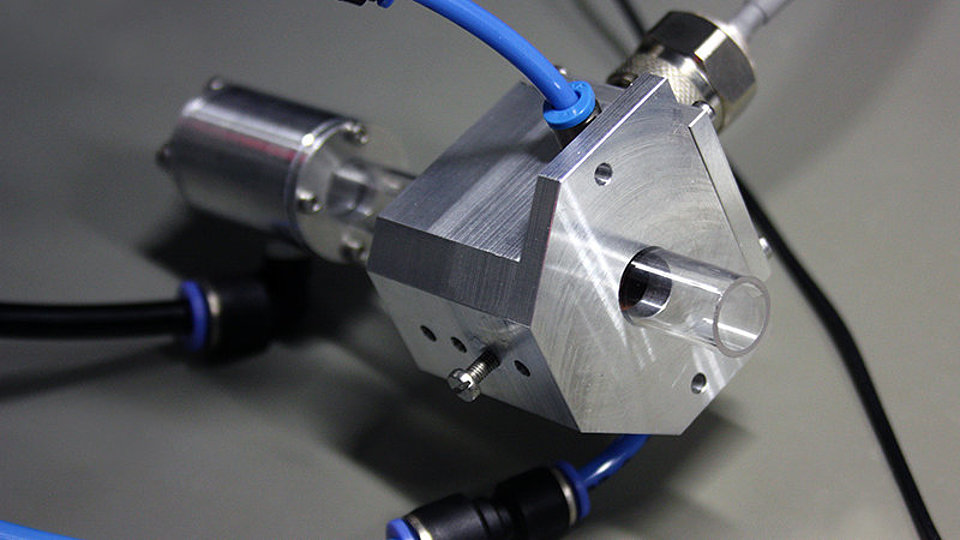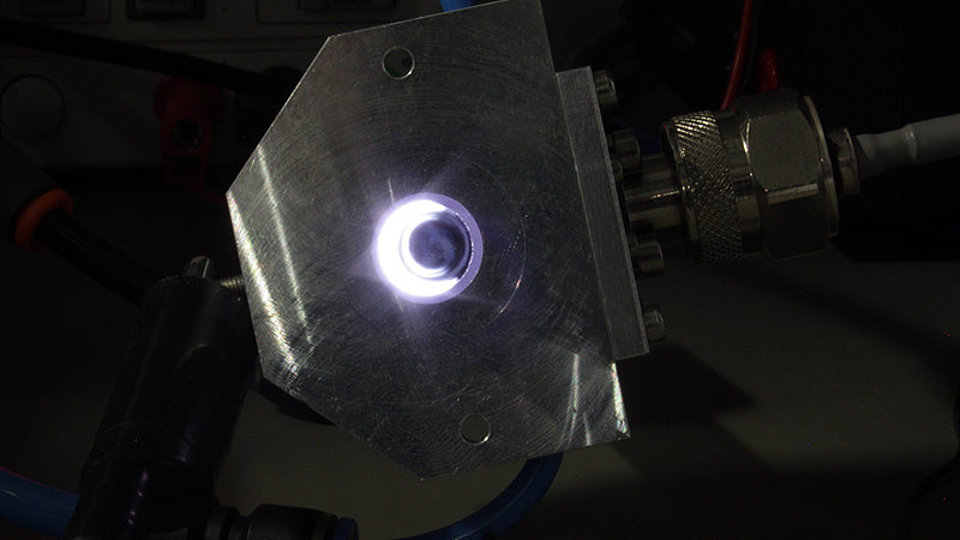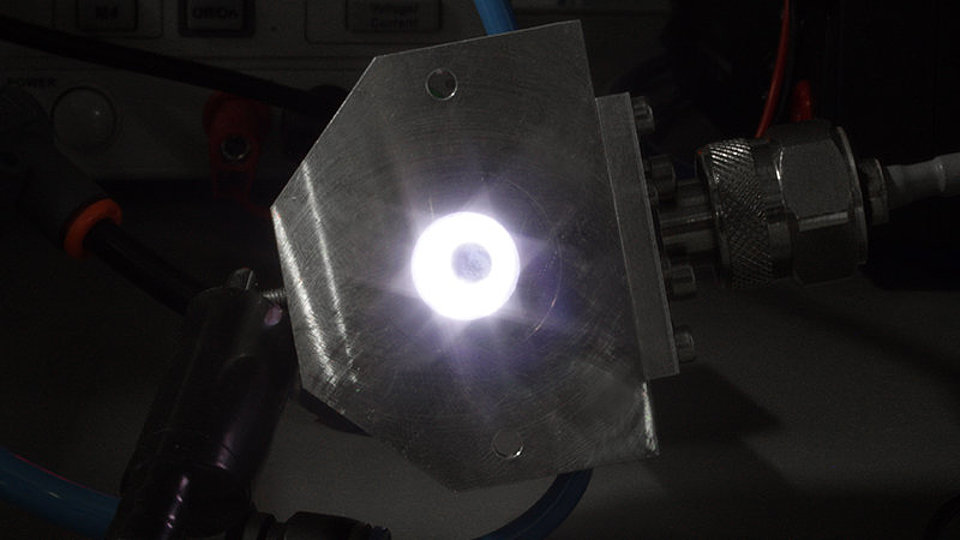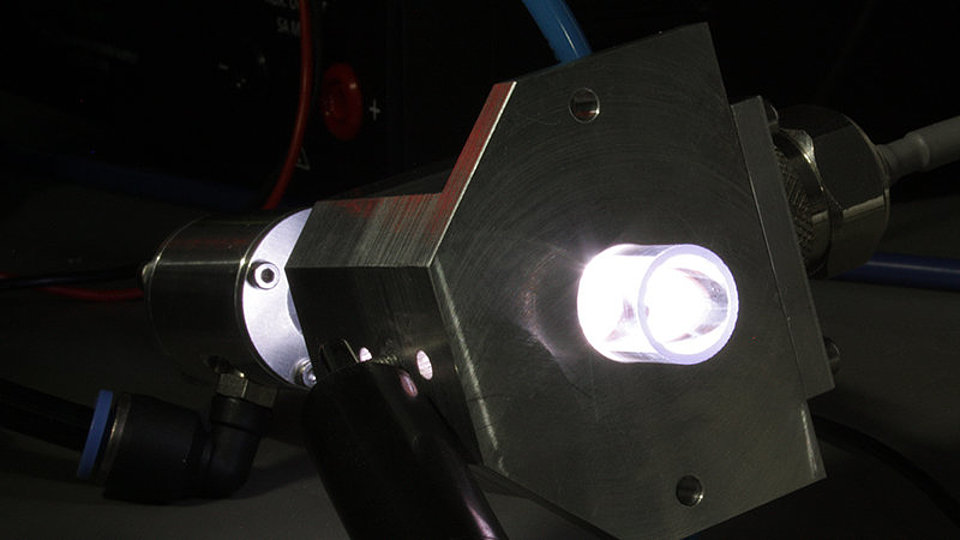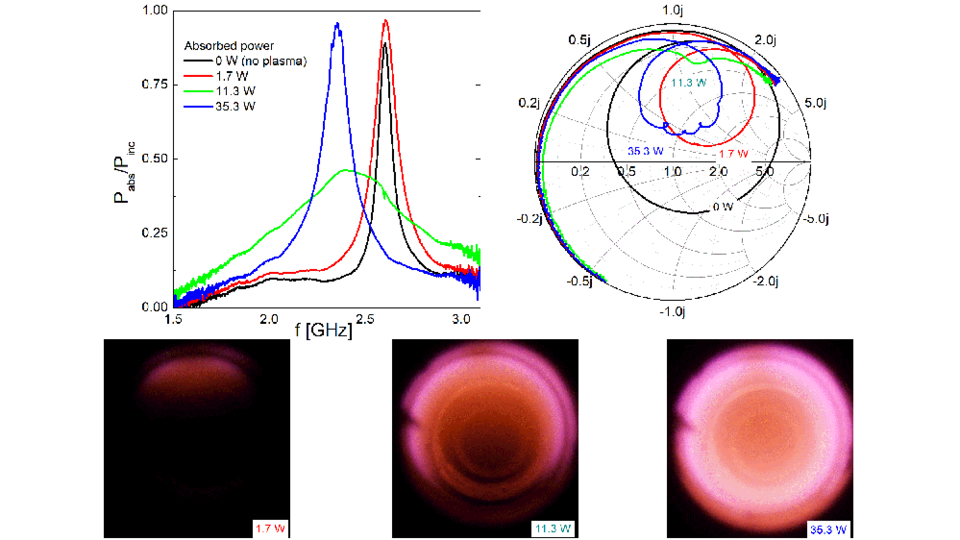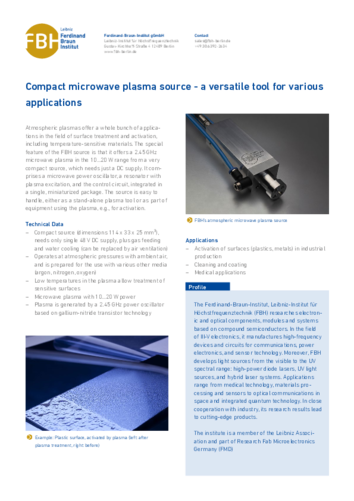Microwave Plasma Sources
Microwave plasma sources are particularly interesting for two application areas: On the one hand, for low-pressure plasma technology, which is used in a wide variety of industrial applications and requires continuous improvements in terms of quality and efficiency – at ever lower costs. On the other hand, for atmospheric microplasmas, since they can be used both to open up new plasma applications and to transfer low-pressure applications to the much more cost-effective atmospheric range.
µPQ - ultra-compact atmospheric pressure microwave plasma source
Atmospheric plasmas enable cost-effective treatment of surfaces, for example activation and cleaning of metal and plastic surfaces. For this purpose, we have developed an extremely compact plasma source that generates a plasma with up up to 20 W. Thus, even temperature-sensitive materials can be processed. It is also suited for medical applications.
The source can be operated very easily. Only gas supply, water cooling and 48 V DC supply are needed. It works with a variety of gases such as argon, air, oxygen and nitrogen. Also, water cooling can be replaced by air cooling if needed.
The housing of the plasma source shows very small form factor (114 x 33 x 25 mm³), it contains a resonator for plasma excitation in the 2.45 GHz ISM band, the corresponding GaN-based power oscillator, and the electronics for control and monitoring.
ICP plasma sources
Inductively coupled plasma (ICP) excitation offers a high electron density of the plasma while maintaining a high level of plasma purity. Classical low-pressure applications (50 Pa) operating at low frequency (13.56 MHz) have high power demands in the range of kilowatts. Solid-state microwave sources can be used in an array-configuration to achieve such power requirements. Due to the large-volume excitation of the plasma, the homogeneity and thus the size of the area to be processed is limited. For this purpose, an array of plasma beams is suitable to compensate this disadvantage.
For certain applications it is useful to use a "remote plasma", which is produced separately. The chemistry and transient behavior of such plasmas can be controlled in a well-defined manner. Moreover, microwave induced plasmas (2.45 GHz), despite their high electron density, can be fairly cold even at room temperature. All these properties are considered, when we design our sources. The way that our plasma source is designed, it is suitable for a variety of gases such as fluorine or chlorine and not limited to air or argon.
Main challenges for plasma jet sources
- efficient energy transfer to the plasma (> 60%, instead of typical 10%)
- compact and robust tuning of the resonance frequency as well as impedance matching for operation with various gases
We investigate and develop microwave-driven ICP plasma sources within a DFG-project in cooperation with the Ruhr University Bochum. We bring together competencies within the field of 3D field simulations and circuit-component design of dedicated resonators and impedance matching circuits as well as from the area of measurement and characterization methods.
-
Compact microwave plasma source
data sheet (pdf)
![[Translate to English:] µPQ-Mikrowellenplasmaquelle im Betrieb µPS- Microwave plasma source in operation](/fileadmin/_processed_/4/1/csm_Micro_plasma_source_70f9258d06.jpg)
![[Translate to English:] µPQ: geöffnetes Gehäuse µPS: Plasma source with opened housing](/fileadmin/_processed_/4/8/csm_Open_microwave_plasma_source_afafc63ee6.jpg)
